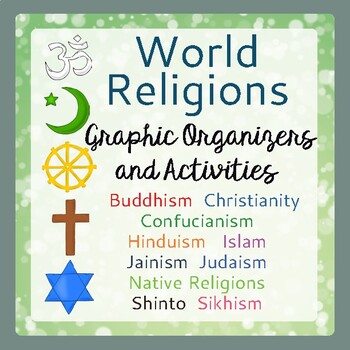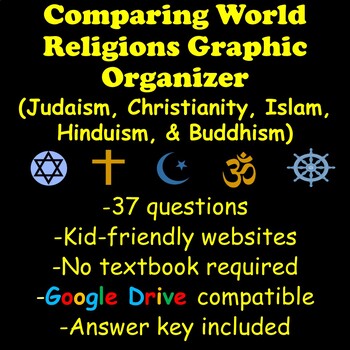- Comparing World Religionsms. Scrolls Ela Classes Free
- Comparing World Religionsms. Scrolls Ela Classes List
- Comparing World Religionsms. Scrolls Ela Classes Online
The Leon Levy Dead Sea Scrolls Digital Library offers an exceptional encounter with antiquity. Using the world's most advanced imaging technology, the Digital Library preserves thousands of scroll fragments, including the oldest known copies of biblical texts, now accessible to the public for the first time. World Religions Courses. Read about courses in world religions, including Eastern, Western, and Native American faiths. Find out where you can take classes, what topics they may cover, and how they can prepare you for future studies in a variety of areas.
While teaching World Religions is not a specified requirement for our homeschooling, it is something we have chosen to add in throughout the years. This has often happened naturally as topics have come up in our reading, history, and everyday life.
One of the best ways to approach this type of learning is by having great resources to go to when you have questions.
One great resource we have found for our kids to use (especially during their middle and high school years) is the ARDA (Association of Religion Data Archives). {Disclosure: This post is sponsored by The ARDA.I was compensated for my time in sharing this information. I only participate in sponsored posts that I would use myself. Please see my full Disclosure Policy for more details.}
The ARDA was featured on the American Library Association’s 2010 Best Free Reference Websites List. You can find out a bit more about the ARDA as a whole here and on Wikipedia.
Reasons To Use The ARDA
Not only is the ARDA site a comprehensive religion reference, but it’s easy to navigate, has a section totally dedicated to Teaching Tools – both for middle/high school as well as resources for college, and it’s totally FREE!

World Religions for Middle & High School
On the Teaching Tools page you can head straight to the Resources for Jr. + Sr. High tab to find both the resources for students as well as an extensive set of resources for you (the teacher or parent).
For Students
Historical Timeline
Here your student can explore various important events and people throughout the centuries of American religious history.
The timeline is fully interactive, so students can view by different categories (people, events) or change the view type. Within each entry, there are pictures, explanatory text, and additional source links allowing students to continue their investigation.
QuickStats
In this section your student can examine Americans’ attitudes and beliefs on a host of issues, as well as their religious behaviors and beliefs. Many people hold assumptions as to what other people believe, but QuickStats allows students to locate empirical evidence that can either support or refute those assumptions. These could be especially useful in teaching about hypothesis testing: making predictions about relationships and then testing those predictions.
Dictionary
The ARDA’s religion dictionary contains hundreds of entries and is fully cross-referenced. Students investigating world religions, for example, could search for Islam and then follow the links to other entries in the dictionary explaining the five pillars of Islam, or the two main branches.
{This happens to be one of our favorite sections. It makes it so easy to plug in one term and then find tons of related terms and definitions, even things you hadn’t yet heard of or thought of yet!}
Compare Yourself Surveys
Here students can answer a number of questions to see how they are similar or different from other youth across the United States.
For Instructors
If you are looking to have a more focused study of religion, the ARDA offers a wide variety of lesson plans on things such as:
- Defining Religion
- The Scientific Study of Religion
- Introducing World Religions
- Religion in America
- Secularism
- and More!
Each lesson has specific learning objectives, relevant readings from which to choose, learning activities to utilize, and assessment tools to gauge student learning on the topic.
There are also resources for building your student’s research skills, a Press Room where you can find the latest religion news and research from around the world, as well as a myriad of Religion Quizzes to test your knowledge! And all of it is FREE!
Even if you aren’t homeschooling middle or high school yet I highly recommend you bookmark the ARDA site for future reference. It can be a great research tool and reference for you and your children at all ages and stages of your homeschooling.
Follow The ARDA on Social Media:
In the Resources + Tutorials column you can find a link to the ARDA YouTube channel where they have collected over 100 videos of the worship services of a number of religions. This can be a great way for your family to virtually experience the worship services that may not be readily available to you.
- Principles of classification
Comparing World Religionsms. Scrolls Ela Classes Free
Comparing World Religionsms. Scrolls Ela Classes List
Our editors will review what you’ve submitted and determine whether to revise the article.
Join Britannica's Publishing Partner Program and our community of experts to gain a global audience for your work! Charles Joseph AdamsClassification of religions, the attempt to systematize and bring order to a vast range of knowledge about religious beliefs, practices, and institutions. It has been the goal of students of religion for many centuries but especially so with the increased knowledge of the world’s religions and the advent of modern methods of scientific inquiry in the last two centuries.
Comparing World Religionsms. Scrolls Ela Classes Online
The classification of religions involves: (1) the effort to establish groupings among historical religious communities having certain elements in common or (2) the attempt to categorize similar religious phenomena to reveal the structure of religious experience as a whole.
Function and significance
The many schemes suggested for classifying religious communities and religious phenomena all have one purpose in common: to bring order, system, and intelligibility to the vast range of knowledge about human religious experience. Classification is basic to all science as a preliminary step in reducing data to manageable proportions and in moving toward a systematic understanding of a subject matter. Like zoologists who must distinguish and describe the various orders of animal life as an indispensable stage in the broad attempt to understand the character of such life as a whole, students of religion also must use the tool of classification in their outreach toward a scientific account of human religious experience. The growth of scientific interest in religion in Western universities since the 19th century has compelled most leading students of religion to discuss the problem of classification or to develop classifications of their own.
The difficulty of classifying religions is accounted for by the immensity of religious diversity that history exhibits. As far as scholars have discovered, there has never existed any people, anywhere, at any time, who were not in some sense religious. The individual who embarks upon the arduous task of trying to understand religion as a whole confronts an almost inconceivably huge and bewilderingly variegated host of phenomena from every locale and every era. Empirically, what is called religion includes the mythologies of the preliterate peoples on the one hand and the abstruse speculations of the most advanced religious philosophy on the other. Historically, religion, both ancient and modern, embraces both primitive religious practices and the aesthetically and symbolically refined worship of the more technologically progressive and literate human communities. Students of religion do not lack material for their studies; their problem is rather to discover principles that will help them to avoid the confusion of too much information. Classification is precisely the appeal to such principles; it is a device for making the otherwise unmanageable wealth of religious phenomena intelligible and orderly.
The endeavour to group religions with common characteristics or to discover types of religions and religious phenomena belongs to the systematizing stage of religious study. According to Max Müller,
All real science rests on classification and only in case we cannot succeed in classifying the various dialects of faith, shall we have to confess that a science of religion is really an impossibility.
Principles of classification
The criteria employed for the classification of religions are far too numerous to catalogue completely. Virtually all scholars who have considered the matter have evidenced a certain amount of originality in their views of the interrelationships among religious forms. Thus, only some of the more important principles of classification will be discussed.
Normative
Perhaps the most common division of religions—and in many ways the most unsatisfactory—distinguishes true religion from false religion. Such classifications may be discovered in the thought of most major religious groups and are the natural, perhaps inevitable, result of the need to defend particular perspectives against challengers or rivals. Normative classifications, however, have no scientific value, because they are arbitrary and subjective, inasmuch as there is no agreed method for selecting the criteria by which such judgments should be made. But because living religions always feel the need of apologetics (systematic intellectual defenses), normative classifications continue to exist.
Many examples of normative classification might be given. The early Church Fathers (e.g., St. Clement of Alexandria, 2nd century ce) explained that Christianity’s Hellenistic (Greco-Roman culture) rivals were the creations of fallen angels, imperfect plagiarisms of the true religion, or the outcome of divine condescension that took into account the weaknesses of men. The greatest medieval philosopher and theologian, St. Thomas Aquinas, distinguished natural religion, or that kind of religious truth discoverable by unaided reason, from revealed religion, or religion resting upon divine truth, which he identified exclusively with Christianity. In the 16th century Martin Luther, the great Protestant reformer, forthrightly labelled the religious views of Muslims, Jews, and Roman Catholic Christians to be false and held the view that the gospel of Christianity understood from the viewpoint of justification by grace through faith was the true standard. In Islam, religions are classified into three groups: the wholly true, the partially true, and the wholly false, corresponding with Islam, the Peoples of the Book (Jews, Christians, and Zoroastrians), and polytheism. The classification is of particular interest because, being based in the Qurʾān, (the Islamic holy book), it is an integral part of Islamic teaching, and also because it has legal implications for Muslim treatment of followers of other religions.

Although scientific approaches to religion in the 19th century discouraged use of normative categories, elements of normative judgment were, nonetheless, hidden in certain of the new scientific classifications that had emerged. Many evolutionary schemes developed by anthropologists and other scholars, for example, ranked religions according to their places on a scale of development from the simplest to the most sophisticated, thus expressing an implicit judgment on the religious forms discussed. Such schemes more or less clearly assume the superiority of the religions that were ranked higher (i.e., later and more complex); or, conversely, they serve as a subtle attack on all religion by demonstrating that its origins lie in some of humanity’s basest superstitions, believed to come from an early, crude stage. A normative element is also indicated in classification schemes that preserve theological distinctions, such as that between natural and revealed religion. In short, the normative factor still has an important place in the classification of religions and will doubtless always have, since it is extraordinarily difficult to draw precise lines between disciplines primarily devoted to the normative exposition of religion, such as theology and philosophy of religion, and disciplines devoted to its description (phenomenology of religion) or scientific study (e.g., anthropology of religion, sociology of religion, or psychology of religion).
- related topics
